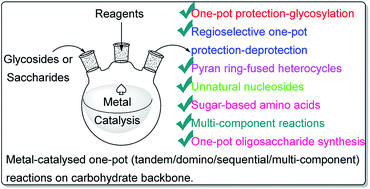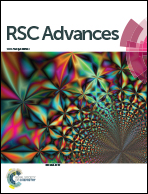One-pot construction of carbohydrate scaffolds mediated by metal catalysts
Abstract
Owing to the environmental concern worldwide and also due to cost, time and labour issues, use of one-pot reactions [domino/cascade/tandem/multi-component (MC) or sequential] has gained much attention among the scientific and industrial communities for the generation of compound libraries having different scaffolds. Inclusion of sugars in such compounds is expected to increase the pharmacological efficacy because of the possibility of better interactions with the receptors of such unnatural glycoconjugates. In many of the one-pot transformations, the presence of a metal salt/complex can improve the reaction/change the course of reaction with remarkable increase in chemo-/regio-/stereo-selectivity. On the other hand because of the importance of natural polymeric glycoconjugates in life processes, the development and efficient synthesis of related oligosaccharides, particularly utilising one-pot MC-glycosylation techniques are necessary. The present review is an endeavour to discuss one-pot transformations involving carbohydrates catalysed by a metal salt/complex.

- This article is part of the themed collection: 2020 Reviews in RSC Advances


 Please wait while we load your content...
Please wait while we load your content...